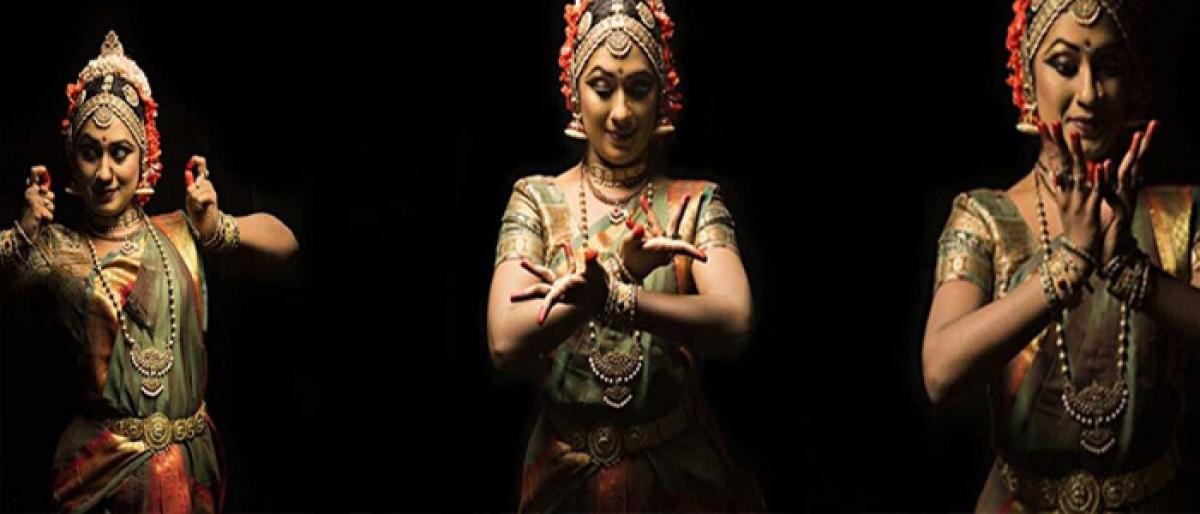Live
- At 47.48 pc, Barmer-Jaisalmer records highest turnout in Rajasthan
- Falsely accusing spouse of infidelity constitutes mental cruelty: Delhi HC
- KCR family not in election battle for first time in two decades
- U20 men's football nationals: Telangana see off Sikkim to set up QF clash against Manipur
- Chintamaneni Prabhakar Promises Security and Welfare for Poor Families with Babu's Super 6 Schemes
- J&K Police file case against attempt to disrespect place of worship
- Velampalli Srinivasa Rao Seeks Votes in 61st Division, Slams Opposition Parties
- Major Development Projects Completed in Bhimavaram Town by MLA Grandhi Srinivas
- Vice Prez offers prayers in Tirumala temple
- Tech Mahindra shares jump more than 8 per cent on turnaround strategy
Just In

For a country obsessed with trying to protect Indian culture from Western influences in almost all spheres of public life, we are shockingly blasé when it comes to protecting the tangible aspects of culture such as our monuments, folk art, street art and classical music and dance.
For a country obsessed with trying to protect Indian culture from Western influences in almost all spheres of public life, we are shockingly blasé when it comes to protecting the tangible aspects of culture such as our monuments, folk art, street art and classical music and dance.
As we grew into modern times, with Western culture disseminating across the world, a lot of art was slowly influenced by it to the point that indigenous artforms took a back seat. If we take a look at our reality TV, especially the dance shows, there is hardly any representation of Indian classical dance forms.
It is not that these dancers are not trained in Indian classical forms but there is a wide perception of classical dance being considered un-hip or uncool and the traditions and cultural codes it is associated with, may make it difficult or boring for audiences to watch.
Durgesh Nandini from Rhythms of Kuchipudi Arts, Hyderabad, says, “Yes, indeed I have dealt with classical forms being called uncool but my spirit to continue teaching classical dance is not in the least affected. Classical dance is unique and no matter how many reality shows or movies present dance forms like hip-hop or jazz, this uniqueness cannot be affected.”
Anshruta Deepkumar, a Bharatnatyam dancer says, “Bollywood and Western culture have such a strong influence on all TV shows and the movies that now the audience is accustomed to seeing dance in only non-classical forms. Even a classical piece is performed to film songs, which changes the very essence of the dance. As for reality shows, a classical piece has always been well appreciated by the judges but the audience cannot relate to it and finds it boring.
Classical dance does not appeal to the audience half as much as any other western form would because classical dance is deeply rooted in mythology, religion and is closely related to the scriptures. The mudras, actions and storytelling that are part of any classical piece are not easily understood and thereby not welcomed by the viewers.”
Mangala Bhatt, Director of Aakruti Kathak Kendra, Kathak Guru, talking about the audience perception of classical dance says, “There is surely more interest in anything which has glamour attached, so the audience for classical dance forms is surely lesser in volume, but I don't think classical forms are made for mass viewing because of its intricacies and presentation trajectory. I have observed that more and more younger people have been coming to our shows. There is a wave of positive change.”
She goes on to talk about reality TV and the representation of Indian classical dance therein by saying, “There are both pros and cons to this. The pros are that a form gains instant popularity among a large audience and is perceived to be glamorous and fashionable.
The cons are that people then start learning with the same approach and want instant results which are contrary to the characteristics of any classical form. But those who are open to dedicating their efforts to a form and understand what it entails will reap the benefits in the long run.”
Durgesh Nandini also talks about how classical forms are being promoted. “Dance meets are being held, even competitions. Advertising has been done through the internet and the response has been remarkable,” she says.
“Young girls have started to show an interest in classical dance,” she adds. The government and private bodies are organising seminars and events across the country and even abroad to preserve classical forms and is well received not just in India but abroad as well. There are petitions circulating on the internet. Dance is being inculcated into school curriculums.
As Anshruta says, “As Western influence has increased, appreciation for the Indian dance forms has definitely decreased, but now people are gradually getting back to the old Indian ways, so let us hope that it changes the future of Indian classical dance too.”
By: Sre Ratha

© 2024 Hyderabad Media House Limited/The Hans India. All rights reserved. Powered by hocalwire.com







